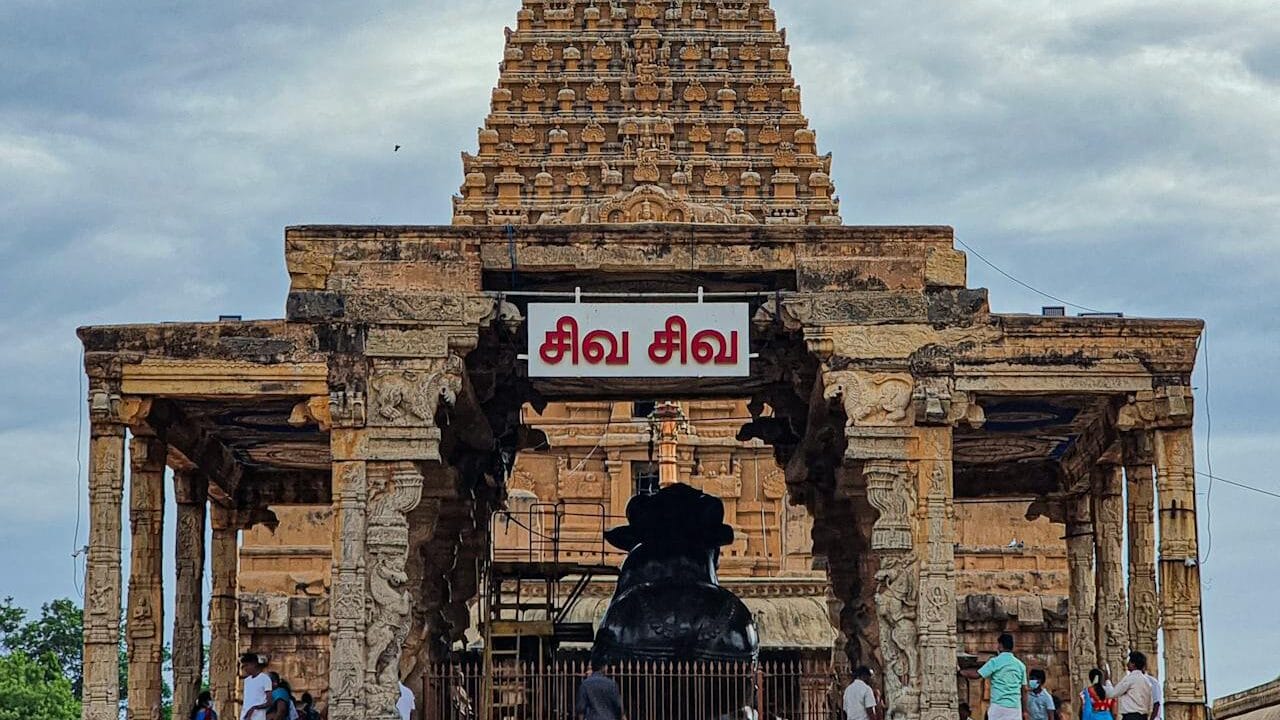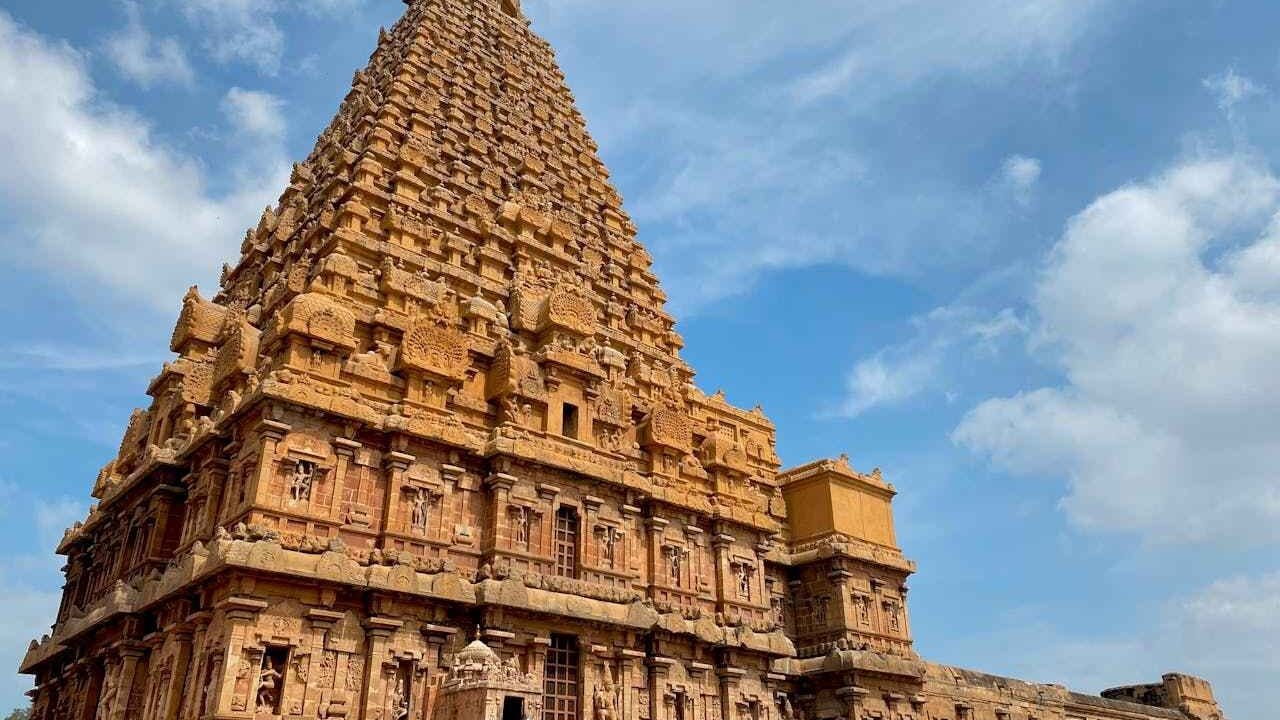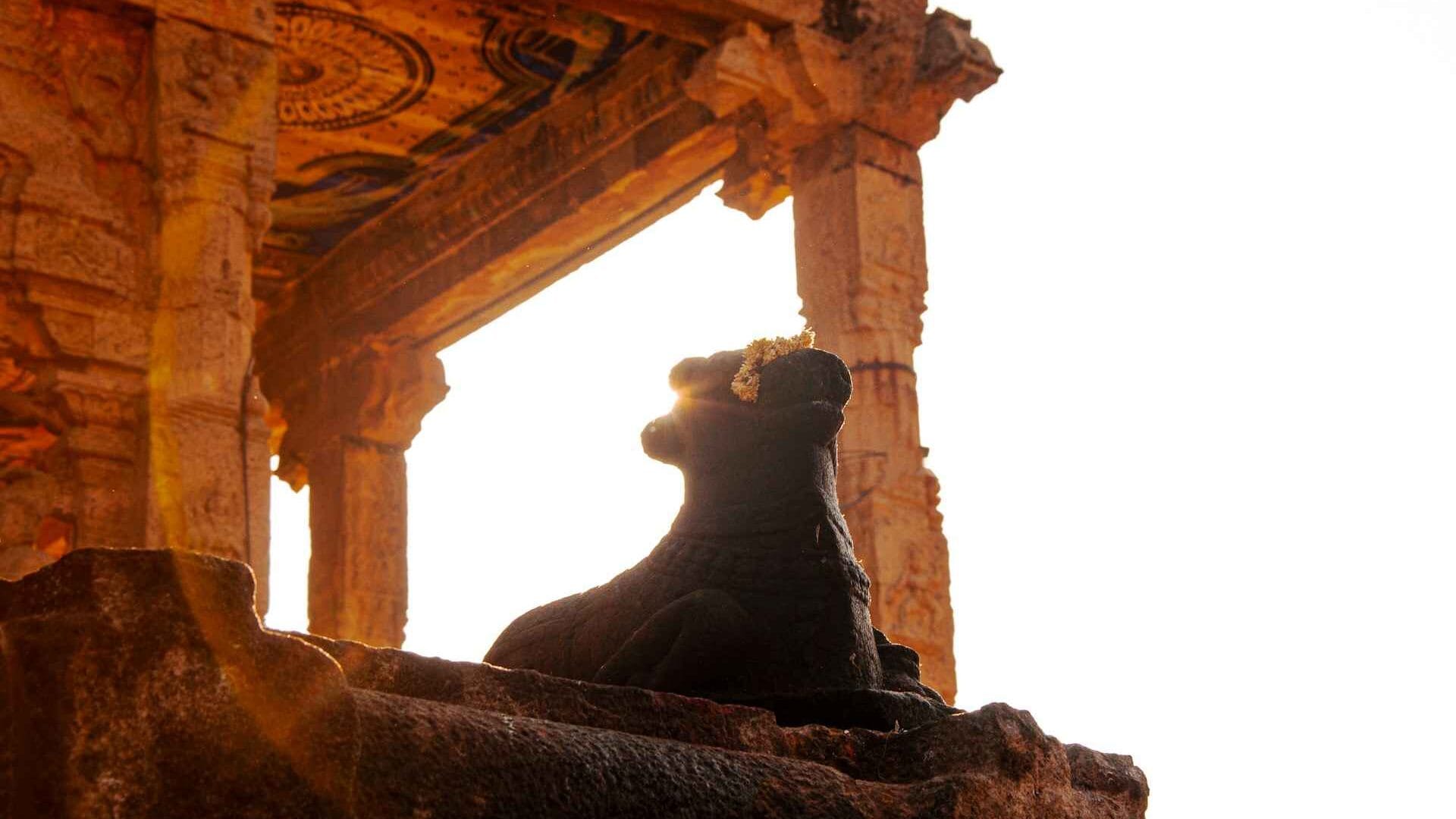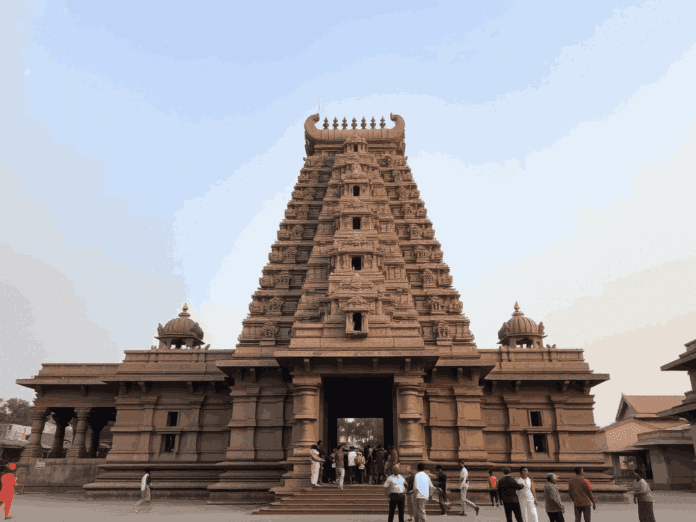Table of Contents
Introduction to Brihadeeswarar Temple: A Forgotten Marvel of Tamil Nadu
Tamil Nadu, often referred to as the land of temples, boasts more than 33,000 ancient shrines, each with unique stories carved into stone. While iconic structures like the Brihadeeswarar Temple or Meenakshi Amman Temple dominate global recognition, lesser-known gems like the Bhadreshwar Temple remain hidden treasures waiting to be rediscovered.
Tucked away in a tranquil village, Bhadreshwar Temple offers more than divine vibrations—it presents a window into the golden age of Chola temple architecture and Tamil culture. Let’s dive deep into its historical, architectural, and mythological significance.

Origin and Historical Significance of Brihadeeswarar Temple
Early Chola Era Foundations
The temple traces its origins to the 9th–10th century CE, during the reign of the Chola dynasty. It was likely constructed under the patronage of Raja Raja Chola I or Aditya Chola, both of whom were known for building temples that served as both spiritual centers and symbols of empire.
Meaning of the Name ‘Bhadreshwar’
“Bhadreshwar” derives from the Sanskrit words Bhadra (auspicious) and Ishwara (Lord), representing Lord Shiva as the protector and destroyer of evil. This form of Shiva was deeply revered during the Chola period and continues to draw Shaivite pilgrims today.
Epigraphical Evidence and Inscriptions
Inscriptions in ancient Tamil and Grantha script found around the temple mention land donations and cattle grants, details of ritual practices and temple staff, and references to Chola queens and merchants who supported the temple economically. These records confirm the temple’s importance in the regional religious and cultural network.
Architectural Grandeur: Dravidian Design at its Finest
Dravidian Temple Architecture Style
The layout and design of Bhadreshwar Temple exemplify early Dravidian architecture, which influenced temple building in Tamil Nadu for over a millennium.
Key Architectural Features of the Temple
- Sanctum Sanctorum (Garbhagriha): Houses a Swayambhu Shiva Linga believed to be self-manifested.
- Vimana (Shikhara): The temple’s central tower is adorned with detailed carvings including mythological depictions of Samudra Manthan, Shiva’s Tandava, and other Puranic tales.
- Mandapa (Pillared Hall): The granite pillars feature carvings of dancing deities, saints, celestial nymphs, and flora-fauna motifs.
- Gopuram (Gateway Tower): Guarded by Dvarapalas (gatekeepers), this smaller-scale gopuram showcases symmetry, sacred geometry, and symbolism.
- Pushkarini (Temple Tank): A sacred water body beside the temple, believed to have emerged due to divine intervention.
Though partially weathered by time, the temple’s structure remains a proud symbol of ancient Tamil craftsmanship and Chola engineering brilliance.

Spiritual, Cultural, and Artistic Relevance
Center for Shaivite Devotion
Brihadeeswarar Temple remains a sacred site for devotees of Lord Shiva, especially during Maha Shivaratri, Pradosham, and Arudra Darshan.
Patronage of Arts and Education
Historical accounts mention Bharatanatyam dancers performing in temple courtyards, classical musicians and Vedic scholars funded by temple grants, and the temple functioning as a learning center for young Brahmins and artists.
Temple Economy and Land Records
It once managed acres of farmland and employed several families. Payments were made in the form of gold, paddy, and livestock, proving its role in the rural temple economy.
Myths, Legends & Historical Events Associated with the Temple
The Rainmaker Legend
During a deadly drought, sages prayed to Lord Shiva at this site. Shiva appeared as Bhadreshwar, struck his trident into the ground, and brought forth water—creating the temple tank that still exists today.
The Queen’s Devotion
An inscription mentions a Chola queen who donated 32 cows, ensuring milk supply for daily abhishekam (ritual bathing of the deity). Her devotion is remembered during temple festivals.
Restoration During Maratha Rule
In the 14th century, the temple suffered damage from invasions. It was partially restored in the 17th century by the Marathas of Tanjore, who contributed structural additions while retaining Chola elements.

Modern-Day Importance and Visiting Information
A Hidden Gem for Offbeat Travelers
While not a mainstream tourist spot, Bhadreshwar Temple appeals to history lovers, cultural enthusiasts, pilgrims seeking solitude, and architecture students and researchers.
Travel Guide: Visiting Bhadreshwar Temple, Tamil Nadu – Sacred, Serene, and Unexplored
If you’re a spiritual seeker, history buff, or offbeat traveler, Bhadreshwar Temple in Tamil Nadu is a must-visit. This ancient Chola-era temple isn’t just about devotion—it’s a peaceful retreat surrounded by stories carved in stone and silence that speaks louder than modern chaos.
How to Reach Bhadreshwar Temple
- By Road: The temple is located in a small village around 35 km from Thanjavur. You can hire a taxi from Thanjavur or take local buses that pass nearby.
- By Train: The nearest major station is Thanjavur Junction. From there, local transport is available.
- By Air: Tiruchirappalli International Airport (TRZ) is the closest airport, located approximately 75 km away.
Best Time to Visit
- October to March is ideal for temple visits due to cooler, pleasant weather.
- Avoid the peak summer months (April–June) due to high temperatures.
- Visit during Maha Shivaratri or Pradosham for a spiritual experience and vibrant rituals.
Nearby Attractions
- Brihadeeswarar Temple (UNESCO World Heritage Site) – 35 km
- Thanjavur Palace – 34 km
- Airavatesvara Temple, Darasuram – 42 km
- Sarangapani Temple, Kumbakonam – 45 km
These places offer the perfect extension to your cultural and spiritual itinerary.

Spiritual Significance of Bhadreshwar Temple
Dedicated to Lord Shiva in the form of Bhadreshwar, this temple is believed to be Swayambhu (self-manifested). Pilgrims often claim to feel a deep, meditative calmness in the sanctum. Ancient scriptures and inscriptions talk about its importance in Chola rituals and royal worship.
Devotees believe that praying here during Pradosham grants peace, prosperity, and divine blessings. The presence of a sacred water tank said to have formed during a divine intervention adds to its sanctity.
Visitor Tips for a Peaceful Experience
- Dress Modestly: As with most South Indian temples, traditional attire is encouraged. Men should wear dhotis or pants with shirts, while women are expected to wear sarees or salwar kameez.
- Carry Essentials: Since it’s in a rural area, carry drinking water, sunscreen, and basic first-aid. There are limited shops around the site.
- Respect Local Customs: Remove footwear before entering. Do not take photographs inside the sanctum unless permitted.
- Hire a Local Guide: There may be no boards or detailed signage, so hiring a local guide or priest will help you understand the temple’s deep-rooted history and symbolism.
- Avoid Weekends if You Seek Solitude: Though not very crowded, festivals and weekends can bring in local visitors. Weekday mornings are quieter for meditation and photography.
- Combine with Nearby Temples: Plan a one-day temple circuit covering Bhadreshwar, Brihadeeswarar, and Darasuram for a complete spiritual journey.
- Watch for Heritage Walks: Occasionally, local heritage groups conduct walking tours. Check online Tamil Nadu tourism pages in advance.

Final Thoughts: Why Bhadreshwar Temple Matters Today
Bhadreshwar Temple is not just a sacred site—it is a symbol of Tamil Nadu’s cultural resilience and spiritual wisdom. Each carved pillar, silent corridor, and sacred tank holds stories not found in textbooks but whispered by history itself.
For those who seek authenticity over commercial tourism, Bhadreshwar Temple offers a meditative, cultural, and historical journey—away from the crowds, yet close to the soul of Tamil heritage.
Frequently Asked Questions (FAQs)
What is Bhadreshwar Temple famous for?
Bhadreshwar Temple is renowned for its Chola-era architecture, Swayambhu Shiva Linga, and status as a lesser-known but historically significant Shaivite shrine in Tamil Nadu.
Who built Bhadreshwar Temple?
Historians believe it was built by Raja Raja Chola I or an earlier Chola monarch around the 9th–10th century CE.
Is Bhadreshwar Temple suitable for tourists?
Yes. Though it’s offbeat, it’s ideal for cultural tourists, pilgrims, and those exploring hidden temples in Tamil Nadu.
What are the main architectural features of Bhadreshwar Temple?
Key features include the vimana with mythological carvings, a mandapa with artistic pillars, a Pushkarini (tank), and sub-shrines.
Are there any festivals celebrated here?
Yes. Major festivals like Maha Shivaratri, Pradosham, and Arudra Darshan are still celebrated annually.

